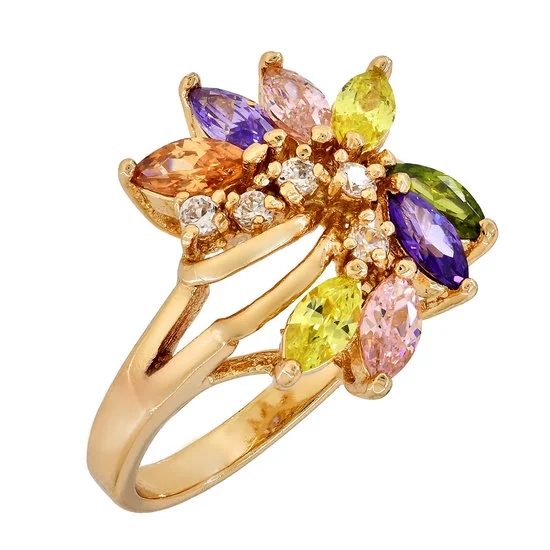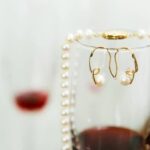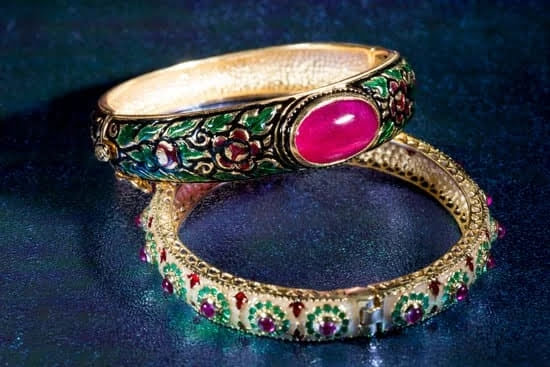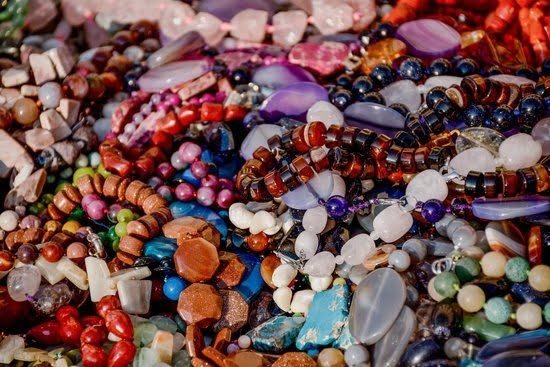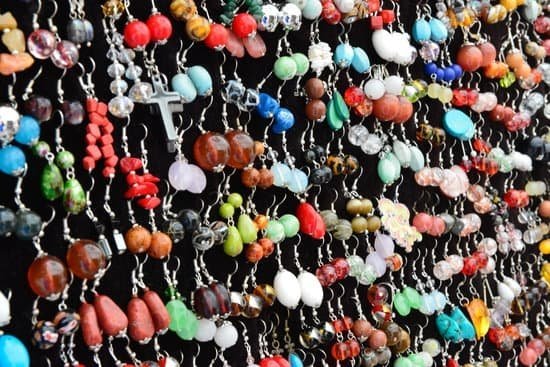Diamonds are among the most sought-after gemstones in the world, prized for their beauty, brilliance, and rarity. However, not all diamond jewelry is created equal, and being able to accurately identify diamonds is crucial when buying or selling these precious gems. In this introductory section, we will explore the definition of diamond jewelry and delve into the importance of being able to identify it.
Diamond jewelry refers to any piece of jewelry that features diamonds as its main focal point. These stunning gemstones are formed deep within the Earth’s mantle under immense pressure and high temperatures over millions of years. The result is a crystal lattice structure that gives diamonds their unique properties such as exceptional durability and refractive qualities.
Identification of diamond jewelry holds significant importance for several reasons. Firstly, it ensures that you are investing in genuine diamonds rather than imitations or simulants. Diamonds can be quite expensive, so being able to distinguish the real deal from an imitation is crucial to avoid scams or deceitful practices. Additionally, identification allows you to assess the quality and value of a diamond based on its characteristics, ultimately helping you make informed decisions when buying or selling.
By understanding what diamond jewelry entails and why identification matters, you will be equipped with valuable knowledge as we further explore the characteristics of diamonds through the 4Cs in the next section. Whether you’re a novice collector or a seasoned jeweler looking to enhance your expertise, this article will guide you through various methods and techniques for identifying diamond jewelry effectively.
So let’s dive in and discover how to become an expert at distinguishing these sparkling gems from their countless imitations.
Characteristics of Diamonds
When it comes to identifying diamond jewelry, understanding the 4Cs is crucial. The 4Cs refer to cut, color, clarity, and carat weight, which are all factors that contribute to the quality and value of a diamond.
Firstly, let’s talk about cut. The cut of a diamond refers to how well it has been shaped and proportioned. It is important to note that cut does not refer to the diamond’s shape, such as round or princess cut, but rather how well it reflects light. A well-cut diamond will have excellent brilliance, fire, and scintillation. On the other hand, a poorly cut diamond may appear dull or lackluster.
Color is another important characteristic to consider when identifying diamond jewelry. Most diamonds range from colorless (the most rare and valuable) to various shades of yellow or brown. The Gemological Institute of America (GIA) provides a color grading scale from D (colorless) to Z (light yellow or brown). When examining diamond jewelry, pay attention to any visible hues or tints.
Clarity refers to the presence of internal characteristics called inclusions and external characteristics called blemishes. These can occur naturally during a diamond’s formation process. The GIA grades clarity on a scale ranging from Flawless (no inclusions or blemishes visible under 10x magnification) to Included (inclusions are easily visible). Take note of any imperfections you observe with your naked eye or with the help of a jeweler’s loupe.
The final factor in the 4Cs is carat weight, which refers to how much a diamond weighs. It is important to note that carat weight alone does not determine a diamond’s value. Two diamonds with the same carat weight can have different values based on their other characteristics like cut and color.
When examining diamond jewelry, here are some tips for evaluating each of the 4Cs:
- For cut: observe how well the diamond reflects light and exhibits brilliance, fire, and scintillation.
- For color: compare the diamond to a color grading scale and look out for any visible hues or tints.
- For clarity: use a jeweler’s loupe to inspect the diamond for inclusions or blemishes visible at 10x magnification.
- For carat weight: weigh the diamond and consider how it may impact the overall value.
Understanding these characteristics will help you identify and assess the quality of diamonds in jewelry. Whether you are examining a loose diamond or a piece of diamond jewelry, paying attention to the 4Cs is essential in determining its value and authenticity.
Physical Examination
When it comes to identifying diamond jewelry, a crucial step in the process is performing a thorough physical examination. By visually and tactically inspecting diamonds, you can gather valuable information about their quality and authenticity. This section will delve into the key components of a physical examination, including visual observation and tactile inspection.
Visual examination plays a vital role in evaluating diamond jewelry. It allows you to assess the diamond’s brilliance, fire, and scintillation. Brilliance refers to the amount of light that enters the diamond and reflects back to your eyes.
A well-cut diamond will have high brilliance due to its ability to reflect light effectively. Fire refers to the flashes of color that you see when light passes through the diamond. Scintillation, on the other hand, refers to the sparkle or pattern of light that bounces off the facets of the diamond as it moves.
Tactile examination involves feeling the smoothness and hardness of the diamond surface. Diamonds are known for their extraordinary hardness, ranking as a 10 on Mohs scale of mineral hardness. When examining diamond jewelry, run your fingers gently across the surface to check for any irregularities or roughness. Genuine diamonds should feel smooth and polished.
To summarize, conducting a physical examination through visual observation and tactile inspection is an essential part of identifying diamond jewelry. By paying close attention to brilliance, fire, scintillation, as well as assessing smoothness and hardness through touch, you can gain insight into a diamond’s quality and determine its authenticity. Continuing on from this section, we will explore another critical aspect of identification: assessing diamond certifications and grading reports.
| Visual Examination | Tactile Inspection |
|---|---|
| – Observe brilliance, fire, scintillation | – Feel the smoothness and hardness |
| – Assess light reflection and sparkle | – Check for irregularities or roughness |
Assessing Diamond Certifications and Grading Reports
When it comes to identifying diamond jewelry, one essential aspect to consider is the role of certifications and grading reports. These documents provide crucial information about the quality and authenticity of a diamond, making them invaluable tools for buyers and sellers alike.
The Role of Certifications
Diamond certifications are issued by independent gemological laboratories and serve as proof of a diamond’s characteristics, such as cut, color, clarity, and carat weight. The most well-known and respected certification organizations include the Gemological Institute of America (GIA), American Gem Society (AGS), and International Gemological Institute (IGI). A certified diamond has been thoroughly evaluated by experts using standardized criteria, providing reassurance to consumers about the diamond’s quality.
Understanding Grading Reports
Grading reports go hand in hand with certifications as they provide a detailed analysis of a diamond’s attributes. These reports typically include a diagram illustrating the diamond’s proportions, measurements, and clarity characteristics. They also grade each 4C individually based on predetermined scales determined by each certification organization.
To interpret a grading report effectively, it is important to understand the terminology used within them. For example, when evaluating color, diamonds are graded on a scale from D (colorless) to Z (light yellow or brown). Meanwhile, clarity evaluations assess the presence of internal or external flaws known as inclusions or blemishes. The GIA grading scale ranges from Flawless (no imperfections visible under 10x magnification) to Included (inclusions visible to the naked eye).
Tips for Verification
While certifications and grading reports are valuable resources for buyers, it is important to verify their authenticity. One way to do this is by cross-checking the information provided in these documents with reputable online databases maintained by certification organizations such as GIA or AGS. Additionally, be cautious when purchasing diamonds without proper certifications or from sellers who cannot provide detailed grading reports. This can indicate a potential risk of purchasing counterfeit or misidentified diamonds.
By understanding the significance of certifications and grading reports in diamond identification, consumers can make informed decisions and confidently purchase diamond jewelry knowing they are receiving an accurately graded and genuine stone.
Testing Diamond Authenticity
When it comes to identifying diamond jewelry, one important aspect is determining the authenticity of the diamond itself. While professional certifications and grading reports provide valuable information, there are also simple tests you can perform at home to verify the authenticity of a diamond. These tests can give you a preliminary indication of whether a diamond is genuine or not.
Here are some common at-home tests for testing diamond authenticity:
- The Fog Test: Hold the diamond close to your mouth and breathe on it as if you were fogging up a mirror. If the fog dissipates quickly, it indicates that the stone is likely a real diamond because diamonds disperse heat rapidly. However, if the fog lingers or takes longer to disappear, it may suggest that the stone is fake.
- The Thermal Conductivity Test: Diamonds have high thermal conductivity, which means they disperse heat quickly. To perform this test, hold the stone between your fingers and then place it against your cheek or lip for a few seconds. A real diamond will feel cool to the touch due to its efficient heat dissipation properties.
- The Diamond Scratch Test: This test involves scratching a known substance with the suspected diamond using moderate pressure. Since diamonds are known for their exceptional hardness, they should be able to scratch materials like glass or quartz easily without showing any signs of damage themselves.
It’s important to note that these tests are not foolproof and should only be used as initial indicators. If you want accurate and conclusive results, it’s best to consult with a professional jeweler who has specialized equipment and expertise in identifying diamonds.
Remember, becoming proficient in identifying diamond jewelry requires practice and experience. By familiarizing yourself with these simple at-home tests, you can start honing your skills and enhancing your confidence in distinguishing genuine diamonds from fakes.
REFERENCES:
- Diamond Nexus – “How To Tell If A Diamond Is Real: Quick Tips”
- International Gem Society – “Diamond Authenticity Tests: When To Know if It’s Real”
Using a Jeweler’s Loupe
Using a jeweler’s loupe is an essential tool for identifying diamond jewelry. A jeweler’s loupe is a small magnifying device that allows for a close inspection of the diamond’s inclusions and blemishes. By examining these characteristics, you can gain valuable insights into the quality and authenticity of the diamond.
Introduction to a Jeweler’s Loupe
A jeweler’s loupe consists of a lens that provides magnification, allowing you to see details that are not visible to the naked eye. It typically has a 10x magnification power, although higher-powered loupes are also available. When using a jeweler’s loupe, it is important to hold it close to your eye and close one eye to achieve proper focus.
Examining Inclusions and Blemishes
Inclusions refer to internal flaws or imperfections within the diamond while blemishes are external flaws on the surface. These unique characteristics occur naturally during the formation process of diamonds and can significantly impact their value.
When using a jeweler’s loupe, carefully examine the diamond for any visible inclusions or blemishes. Inclusions can range from tiny black specks or cloud-like formations to larger crystals trapped within the diamond. Blemishes may include scratches, chips, or naturals (parts of the original crystal surface left unpolished).
Common Types of Inclusions and Blemishes
Understanding common types of inclusions and blemishes will help you assess the quality of a diamond accurately. Some common types include:
- Pinpoints: Tiny dots within the diamond that resemble pinpricks.
- Feathers: Small cracks that resemble feathers.
- Clouds: Hazy or milky areas caused by clusters of tiny inclusions.
- Crystals: Small minerals within the diamond.
- Cavities: Small openings or holes on the diamond’s surface.
By familiarizing yourself with these types of inclusions and blemishes, you can confidently assess the authenticity and quality of a diamond using a jeweler’s loupe. Remember to be thorough in your examination, and if you are unsure or need a professional opinion, seek assistance from a reputable jeweler or gemologist.
Using a jeweler’s loupe is just one method in the process of identifying diamond jewelry. In the next section, we will explore how to spot fake diamonds by identifying common diamond simulants.
Spotting Fake Diamonds
Diamond simulants are materials that resemble diamonds in appearance but are not actual diamonds. It is important to be able to identify these simulants when examining diamond jewelry, as they can significantly impact the value and authenticity of a piece. This section will provide an overview of popular diamond simulants, discuss key differences between diamond simulants and genuine diamonds, and offer techniques to distinguish between the two.
Popular Diamond Simulants:
- Cubic Zirconia (CZ): This is one of the most common diamond simulants. It is a synthetic material that closely resembles a diamond’s brilliance and clarity. However, CZ has a higher dispersion rate than diamonds, resulting in more colorful flashes of light. Additionally, CZ is much softer than diamonds and can be easily scratched.
- Moissanite: Moissanite is another popular diamond simulant known for its exceptional brilliance and fire. It has a similar hardness to diamonds but displays double refraction, meaning that instead of appearing as a single facet inclusions within the stone become doubled or multiplied.
Distinguishing Between Diamond Simulants and Genuine Diamonds:
There are several techniques you can use to differentiate between diamond simulants and genuine diamonds:
- The Fog Test: Hold the stone close to your mouth and fog it with your breath like you would fog up glass. If the stone remains fogged for a few seconds before clearing up, it is likely a simulant because real diamonds disperse heat quickly.
- Thermal Conductivity Test: Use a thermal conductivity tester to measure how quickly heat passes through the stone. Diamonds have high thermal conductivity, while many simulants do not.
- Diamond Scratch Test: Trying to scratch the surface of a diamond with another diamond does no damage because diamonds are one of the hardest substances on Earth. However, other materials like cubic zirconia or glass cannot withstand this test as they can be readily scratched by real diamonds.
It’s crucial to note that these tests should be used as initial indicators and further examinations, such as consulting a gemologist or using specialized equipment, may be necessary for a definitive identification.
| Diamond Simulant | Main Characteristics |
|---|---|
| Cubic Zirconia (CZ) | High dispersion rate, can be easily scratched |
| Moissanite | Exceptional brilliance and fire, double refraction |
Additional Tips for Identifying Diamond Jewelry
Identifying diamond jewelry can be a daunting task, especially for those who are not familiar with the intricacies of diamonds. However, there are additional tips and techniques that can help in accurately identifying diamond jewelry. These tips go beyond the traditional methods and provide further insight into the authenticity and quality of diamonds.
One important tip is to check for proper diamond settings and craftsmanship. Genuine diamond jewelry is often set in high-quality materials such as gold or platinum, with attention to detail in the setting itself. Look for any signs of poor craftsmanship, such as uneven prongs or a setting that does not securely hold the diamond.
It is also essential to examine how the diamonds are placed within the piece of jewelry. Genuine diamonds will be set symmetrically and evenly, while fake stones may be glued or poorly aligned.
When in doubt, seeking a professional opinion or appraisal can provide peace of mind and ensure accurate identification. Professional jewelers have years of experience and knowledge regarding diamonds and can offer expert advice on evaluating diamond quality. They often have specialized tools and equipment to conduct thorough examinations that may not be possible at home. An appraisal from a reputable jeweler can also give an estimate of the value and authenticity of your diamond jewelry.
It is also crucial to stay updated on the latest techniques and technologies used for diamond identification. As technology advances, so do the methods used by counterfeiters to create convincing imitations. Staying informed about new developments in diamond identification can help you keep up with these advancements and make more informed decisions when buying or evaluating diamond jewelry.
By following these additional tips, you can enhance your abilities in identifying genuine diamond jewelry. Remember to always take a close look at settings and craftsmanship, seek professional opinions when needed, and stay informed about new technologies and techniques. With practice, you can become an expert in identifying diamond jewelry, ensuring that you make informed choices when it comes to purchasing these precious gems.
Conclusion
In conclusion, becoming a diamond jewelry expert is not only essential for those in the diamond industry but also for consumers who want to make informed purchasing decisions. Being able to identify diamond jewelry allows individuals to understand the quality and value of the diamonds they own or are considering purchasing.
By understanding the characteristics of diamonds, conducting physical examinations, assessing certifications and grading reports, testing for authenticity, using a jeweler’s loupe, and spotting fake diamonds, individuals can develop the skills necessary to become a diamond jewelry expert.
It is important to continually practice and refine these skills in order to become more proficient in identifying diamond jewelry. The more experience one gains in evaluating the 4Cs, conducting tests for authenticity, and examining diamonds using tools like a jeweler’s loupe, the better equipped they will be to make accurate assessments. Seeking out professional opinions or appraisals when unsure about a particular piece of diamond jewelry can also help improve one’s expertise.
Staying updated on industry techniques and technologies is crucial in becoming a diamond jewelry expert. The field of diamond identification is constantly advancing with new tools and methods being developed. By staying informed through resources such as industry publications, attending workshops or conferences, and engaging with online communities dedicated to diamond education, individuals can continue to expand their knowledge and expertise.
Becoming a diamond jewelry expert takes dedication and continuous learning. However, by developing these skills individuals can have confidence in their ability to accurately identify and evaluate diamonds. Whether buying or selling diamond jewelry or simply having an appreciation for these precious gemstones, being knowledgeable about diamond identification enhances one’s overall experience within the world of diamonds.
Frequently Asked Questions
How can you tell if jewelry is real diamond?
A few methods can help determine if a piece of jewelry contains real diamonds. One frequently used technique is the diamond tester, which measures a diamond’s thermal conductivity to differentiate between real and fake stones. Another way to assess the authenticity is by examining the stone’s clarity, cut, color, and carat weight.
Natural diamonds usually have flaws or imperfections in their internal structure, unlike synthetic ones that are often flawless. Additionally, evaluating the setting and craftsmanship of the piece can give clues about its authenticity.
Can you tell if a diamond is real by its sparkle?
While a diamond’s sparkle can be an indication of its quality, it does not necessarily guarantee it is real. The brilliance and sparkle of a diamond are products of how light interacts with the stone’s facets, dispersion, and cut quality. Real diamonds do exhibit exceptional brilliance due to their high refractive index, but this doesn’t mean all sparkling stones are genuine diamonds.
Various imitation stones or even cubic zirconia can also appear sparkly under certain lighting conditions. Therefore, relying solely on sparkle as a determining factor for a diamond’s authenticity is not reliable without further examination.
Is there an app to identify diamonds?
Yes, there are several apps available that claim to identify diamonds using your smartphone camera. These apps generally use image recognition technology combined with databases of known diamond characteristics to analyze and provide an assessment of the stone’s likelihood of being a genuine diamond.
However, it is important to note that these apps may not always deliver accurate results as they heavily rely on input data and algorithms that might have limitations or inconsistencies in their identification process. For definitive assurance regarding a diamond’s authenticity, it is best to consult with professional gemologists who possess the expertise and specialized tools necessary for thorough evaluation.

Welcome to my jewelry blog! My name is Sarah and I am the owner of this blog.
I love making jewelry and sharing my creations with others.
So whether you’re someone who loves wearing jewelry yourself or simply enjoys learning about it, be sure to check out my blog for insightful posts on everything related to this exciting topic!

